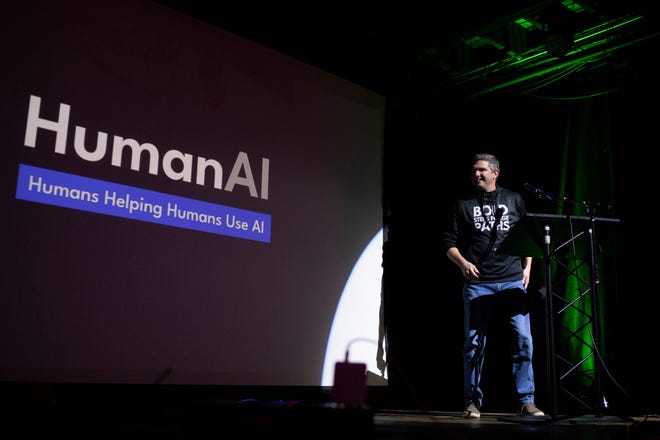- Bob Higgins is CEO and President of Barge Design Solutions
As artificial intelligence (AI) becomes increasingly present in business and our daily lives, a pressing question arises: “Is AI friend or foe?”
As a business leader, my optimism about AI and its positive potential far outweighs any concerns. The general consensus is that automation, especially AI, is a powerful tool for making a wide variety of business decisions, as 80% of executives nationwide agreed in a Gartner survey. One-third are strategically integrating AI across multiple departments.
This overall outlook indicates growing acceptance and confidence in the transformative power of AI in business.
For some, AI raises concerns about job displacement and security threats. While valid and reasonable, this reflects similar past concerns when new technologies and innovative breakthroughs emerge.
AI complements the workplace, not replaces it
It's all a matter of perspective. Rather than thinking about what AI will replace, identify capabilities that AI does not have: uniquely human characteristics such as creativity, collaboration, and nuanced decision-making. This shift in perspective reveals that AI is a complementary tool that can enhance and amplify human capabilities.

By leveraging AI as a thought partner, you can start with 20% to 80% of what you need and refine from there. MIT calls this collective intelligence, or “a way of connecting people and computers so that they collectively act smarter than any individual, group, or computer ever before.”
Recognizing that we are in the early stages of AI, business leaders must act as wayfinders bridging the gap between rich AI information and strategic understanding. This includes using AI across a variety of applications to enhance operations, streamline workflows, and drive innovation.
Business leaders must lead by example in AI adoption, starting with low-risk use cases, continuously evaluating progress, and learning by doing. Barge has demonstrated this internally and is inviting other companies to join. We recently collaborated with Vanderbilt University to introduce the “Generative AI for Leaders” course on Coursera. This comprehensive program provides executives with practical AI skills including agenda building, proposal proficiency, brainstorming, HR dynamics, leadership transitions, and more.
Learn how companies can usher in a new era of productivity
McKinsey predicts that generative AI could boost labor productivity growth by 0.1% to 0.6% by 2040, depending on the rate of technology adoption and the reallocation of workers' time to other activities. doing. Effective use of AI can streamline meeting preparation, extract complex data for presentations, analyze market trends, enable personalized customer experiences, and free up executives' time more effectively. You can spend it on purpose.
This fosters a productive work environment where employees can prioritize the uniquely human aspects of their roles, such as creativity and innovation.
Business leaders must recognize AI as a valuable strategic ally. As we progress, AI can serve as an essential resource, providing personalized support, refining ideas, and effectively serving as individual boards and leaders.

Accepting AI as an ally for value creation
As with any breakthrough idea in the past, it makes sense for people to tread carefully when adopting AI.
But I see AI as more than just a tool. AI is a valuable thought partner that actively contributes to idea generation and evaluation. We encourage business leaders to lead by example by leveraging AI as a strategic ally within their organizations as well.

When used correctly, it's clear that generative AI is not an enemy, but an ally to be embraced. This provides an opportunity to enhance decision-making processes, streamline operations, and increase productivity, ultimately freeing up teams to focus their time and expertise on the irreplaceable work that only humans can undertake. It will look like this.
Bob Higgins is CEO and President of Barge Design Solutions


